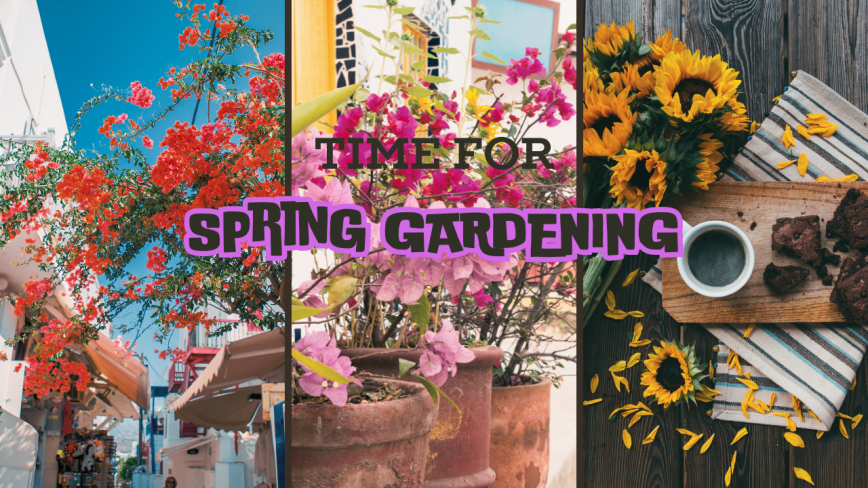
Spring in California is a perfect time to transform your balcony into a lush, vibrant garden oasis. With the right approach, even a small 50 square foot space can become a thriving urban garden, bursting with fresh herbs, colorful flowers, and even some tasty veggies. Here’s how to make the most of your balcony garden this spring:
Selecting the Right Soil
The foundation of a healthy garden starts with the soil. For balcony gardening, it’s best to use a high-quality potting mix specifically designed for containers. Look for mixes that are well-draining, nutrient-rich, and contain ingredients like compost, perlite, and vermiculite. Avoid using garden soil, as it can become too compacted in pots.
Nutrients and Organic Fertilizers
To ensure your plants get the nourishment they need, consider incorporating organic fertilizers and plant food into your balcony garden routine. Some excellent options include:
- Compost: A rich source of nutrients made from decomposed organic matter. You can make your own compost or purchase high-quality compost from your local nursery.
- Worm Castings: These nutrient-dense castings from worms are an excellent natural fertilizer and soil conditioner.
- Seaweed Extract: A liquid fertilizer made from seaweed that provides a wide range of minerals and growth-promoting compounds.
- Fish Emulsion: A smelly but highly effective organic fertilizer derived from fish waste and byproducts.
Apply these organic fertilizers and plant food according to the instructions, and your plants will thank you with lush growth and bountiful harvests.
Best Plants for Your California Balcony Garden
When it comes to selecting plants for your balcony garden, consider the following options that thrive in California’s spring weather:
Herbs:
- Basil: This fragrant herb loves warm temperatures and sunny spots.
- Rosemary: A hardy, drought-tolerant herb that adds flavor to dishes.
- Mint: Grows well in containers and can be used in teas, cocktails, and more.
Vegetables:
- Tomatoes: Cherry or patio varieties do well in containers and soak up the California sun.
- Leafy Greens: Lettuce, spinach, and kale are cool-weather crops perfect for spring.
- Radishes: These spicy veggies mature quickly and can be grown in shallow containers.
Flowers:
- Petunias: Vibrant and prolific bloomers that add a pop of color to your balcony.
- Marigolds: Bright orange or yellow flowers that are low-maintenance and attract beneficial insects.
- Geraniums: Tough, drought-tolerant plants that come in a variety of colors.
With the right soil, nutrients, and plant selection, your 50 square foot balcony in California can become a verdant, productive garden space this spring. Embrace the joy of urban gardening and enjoy the fresh flavors and beautiful blooms right outside your door.
Planting Strategy
Here’s a diagram showing a planting strategy for a 50 sq ft balcony based on the text pattern provided:
+-------------+-------------+-------------+-------------+
| | | | |
| Sunflower | Tomatoes | Peppers | Cucumbers |
| | (Staked) | (Support) | (Climb) |
+-------------+-------------+-------------+-------------+
| | | | |
| Basil | Mint | Dill | Lettuce |
| (Crafty | (Crafty | (Crafty | (Crafty |
| trellis) | trellis) | trellis) | shade) |
+-------------+-------------+-------------+-------------+
| | | | |
| Marigold | Zinnia | Nasturtium | Calendula |
| (Border) | (Border) | (Border) | (Border) |
| (Attract | (Attract | (Attract | (Attract |
| pollinators)| pollinators)| pollinators)| pollinators)|
+-------------+-------------+-------------+-------------+
| | | | |
| Bougainvillea| Bougainvillea| Bougainvillea| Bougainvillea|
| (Feature) | (Feature) | (Feature) | (Feature) |
+-------------+-------------+-------------+-------------+In this diagram, the balcony space is divided into four equal sections. Each section has a specific planting strategy:
- The top row features tall plants like sunflowers, tomatoes (staked), peppers (with support), and cucumbers (climbing).
- The second row contains crafty trellises or shaded areas for growing herbs like basil, mint, dill, and lettuce.
- The third row is dedicated to border plants like marigolds, zinnias, nasturtiums, and calendulas, which attract pollinators.
- The bottom row features bougainvillea plants as a feature or focal point in each section.
Slightly different design
+---------------+---------------+---------------+---------------+
| | | | |
| Sunflower | Tomatoes | Peppers | Cucumbers |
| | (Staked) | (Support) | (Climber) |
+---------------+---------------+---------------+---------------+
| | | | |
| Basil | Mint | Dill | Lettuce |
| (Crafty Trellis)| (Crafty Trellis)| (Crafty Trellis)| (Shaded) |
+---------------+---------------+---------------+---------------+
| | | | |
| Marigold | Zinnia | Nasturtium | Calendula |
| (Border) | (Border) | (Border) | (Border) |
| (Attract Pollin-| (Attract Pollin-| (Attract Pollin-| (Attract Pollin-|
| ators) | ators) | ators) | ators) |
+---------------+---------------+---------------+---------------+
| | | | |
| Bougainvillea | Bougainvillea | Bougainvillea | Bougainvillea |
| (Feature) | (Feature) | (Feature) | (Feature) |
+---------------+---------------+---------------+---------------+The planting strategy remains the same, with the balcony space divided into four equal sections:
- The top row features tall plants like sunflowers, tomatoes (staked), peppers (with support), and climbing cucumbers.
- The second row contains crafty trellises or shaded areas for growing herbs like basil, mint, dill, and lettuce.
- The third row is dedicated to border plants like marigolds, zinnias, nasturtiums, and calendulas, which attract pollinators.
- The bottom row features bougainvillea plants as a feature or focal point in each section.
This layout maximizes the use of vertical space, incorporates companion planting principles, and provides a visually appealing mix of edible and ornamental plants. The diagram can still be adjusted based on personal preferences or the specific plants chosen for the balcony garden.